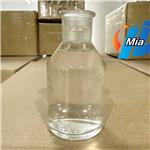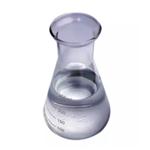- Phenyllithium
-

- $10.00 / 1kg
-
2024-04-24
- CAS:591-51-5
- Min. Order: 1kg
- Purity: 99.6%
- Supply Ability: 100000
- Phenyllithium
-

- $5.00 / 1KG
-
2023-07-26
- CAS:591-51-5
- Min. Order: 1KG
- Purity: 99%
- Supply Ability: 10000kg
- Phenyllithium
-

- $1.00 / 1kg
-
2019-07-06
- CAS:591-51-5
- Min. Order: 1kg
- Purity: 99%
- Supply Ability: Customized
|
| | Phenyllithium Chemical Properties |
| Melting point | 160-163 °C(Solv: benzene (71-43-2)) | | Boiling point | 140-143 °C | | density | 0.835 g/mL at 25 °C | | Fp | 20 °C | | storage temp. | Store at +2°C to +8°C. | | solubility | Miscible with ether and hydrocarbons. | | form | Dark Brown Solution | | Water Solubility | Severe reaction | | Sensitive | Air & Moisture Sensitive | | BRN | 506502 | | Stability: | Moisture Sensitive | | InChIKey | NHKJPPKXDNZFBJ-UHFFFAOYSA-N | | CAS DataBase Reference | 591-51-5(CAS DataBase Reference) | | EPA Substance Registry System | Lithium, phenyl- (591-51-5) |
| | Phenyllithium Usage And Synthesis |
| Description | Phenyllithium is an organometallic compound that is used as a nucleophile for substitution and addition reactions, and in the synthesis of organolithium building blocks through lithium-metalloid and metalation exchange reactions.
| | Properties | Phenyllithium has a molecular weight of 84.046 g/mol, a monoisotopic mass of 84.055 g/mol and an exact mass of 84.055 g/mol. It has a heavy atom count of 7 and a complexity of 95.8.
Phenyllithium is soluble in ether solvents; it is soluble in hydrocarbon solvents especially through the addition of donor additives/solvents.
| | Uses | Phenyllithium is used for synthetic purposes to introduce a phenyl group into a compound or for metalation reactions. It undergoes typical Grignard type reactions.
| | Preparation | Phenyllithium is synthesized by reacting elemental lithium with bromobenzene and dissolving the resulting products in ether. 18g[2.57 mol] of lithium that contains about 1-3% of sodium is flattened out using a hammer to attain a thickness of about 1.5 mm and then it is cut into chips of about 2x10x1.5 mm. The chips are placed into a flask holding 800 ml of anhydrous diethyl ether. The air is purged with dry argon or dry nitrogen and the ether is condensed to -250 C in the first two minutes of the reaction.
150.7 g of bromobenzene is placed into the flask through the dropping funnel, where one portion contains only 10 g of bromobenzene. After a few minutes of the reaction, there is a significant rise in temperature and the contents of the flask appear turbid. When the reaction starts to subside, after about 10 minutes, the remaining bromobenzene is added gradually to the flask using a dropper over a period of 1 hour, while maintaining the temperature of the contents between -150 C and -200 C. The dark coating on the lithium metal subsides almost entirely leaving behind a silver-like appearance.
Once all the bromobenzene is added to the flask, the contents are stirred and the temperature is maintained at -150 C for 1 hour. The temperature should then be allowed to increase up to 00, which will also be indicated a gradually fading glow of the reacting metal.
The resulting solution is emptied into a storage flask that has been filled with an inert gas. The filtration of the solution should take place in an inert atmosphere where a steady stream of argon or nitrogen[2-3 l/min] is passed through the reaction contents to prevent the solution from oxidation. Diethyl ether is then added to increase the Volume of the solution to 1 litre. The contents of the flask are then swirled gently[homogenization] to allow for the final step of the reaction, where the concentration is determined.
Solutions containing Phenyllithium are unstable at room temperature when left for long periods of time. The gradual attack of Phenyllithium on ethyl ether makes the commercial preparation of the compound undesirable. The incorporation of small quantities of ethyl ether to attain solutions of 1:1 phenyllithiumzethyl etherate complex in the presence of benzene reduces the average titer of the ethyl ether hence it makes the solution more stable.
The average titer should be about 1 molar, which corresponds to a high yield[90%] and purity. Amounts that are significantly higher or lower than the mol ratio often yield lesser amounts of Phenyllithium. The resulting 1:1 phenyllithiumzethyl etherate complex could be a tetramer or a dimer but it does not affect the ethyl ether to Phenyllithium ratio, which remains 1:1.
| | Application | Phenyllithium can be used in the preparation of 1-Acetyl-1′-diphenylphosphinoferrocene from ferrocenophane
| | Hazard Statements | Phenyllithium is a flammable liquid/vapour and it may catch fire when exposed to air. When it comes into contact with water it emits flammable gases. Phenyllithium may result in acute toxicity upon ingestion and inhalation, or when it comes into contact with one’s eyes and skin.
| | Chemical Properties | Phenyllithium is a colorless crystalline solid or dark brown to black solution, It is soluble in polar solvents such as ethers and tertiary amines but insoluble in hydrocarbons. Concentrated solutions in volatile solvents are pyrophoric but can be safely handled under inert atmosphere. | | Uses | Phenyllithium Solution (1.9M in Dibutyl Ether) is used as catalyst in the synthesis of pharmaceuticals. Used in the preparation of sulfonamides as well as in the preparation of orally bioavailable inhibitors of lipoprotein-associated phospholipase A2. | | Preparation | Phenyllithium is usually prepared in the laboratory from bromobenzene and lithium metal in diethyl ether. Since phenyllithium cleaves ether, the solution must be used within a day or refrigerated. Industrially, it is produced from chlorobenzene and lithium metal dispersion in a benzene-ether mixture. A potentially useful and inexpensive process is one in which benzene is metalated by n-butyllithium in the presence of di-tertiary amines. | | Definition | ChEBI: Phenyllithium is an aryllithium compound. |
| | Phenyllithium Preparation Products And Raw materials |
|